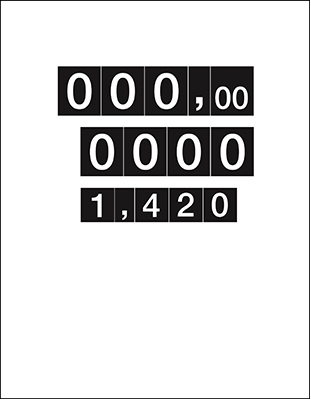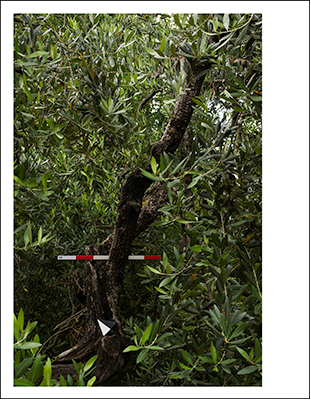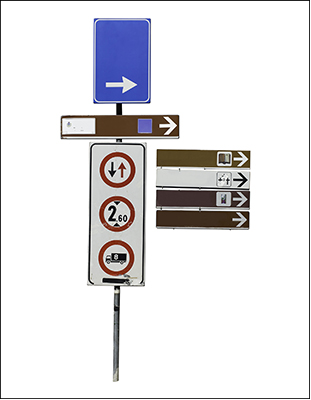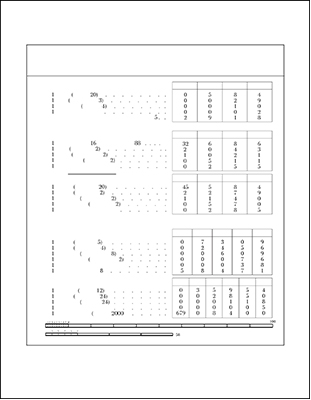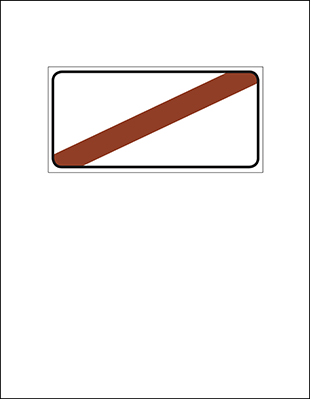WORKS
0000,00 Palaia Pandemic Book (2020)
The fusion between the main numbers on the display of the petrol pump of Palaia (Pisa-IT) gives rise to another very suggestive number that at the same time recall the idea of beginning, end, defeat, quiet, rest, immobility, opportunity, rebirth. In the light of the pandemic and how it was faced and communicated, the sequence of zeros is the starting point of a necessary thinking on the ability of numbers and science to describe real phenomena and places. Like everyone else, even the numbers of Palaia – recovered in posters, road signs, menus, notices, monuments… – taken alone do not generate any knowledge, managing at most to evoke the time of an event (but what?), geographical distances (to where?), prices (of what?), times (for which days?) and condolence (for who?). A documentation – the numerical one – that even in a small village is wide, yes, but imperfect; synthetic but imprecise. So in the images numbers are lost floating in the void of spaces intended for more copious and accurate information. The bewilderment and discouragement given by the approximation of numbers without words are however mitigated by the stylistic and conceptual model chosen for the project and the lightness of its intelligent approach to photography, travel and life: the sequence of 26 gasoline stations that Ed Ruscha built in 1963 for his now legendary book (Twentysix Gasoline Stations). Surely another Monday will arrive soon and in the display of the pump of Palaia other numbers will come to life again.
The project has been made during an artist residency at THP Tuscan House of Photography.
Series of 50 photographs (18 x 14 cm); inkjet print on cotton paper
The display of the Palaia petrol pump –|– Palaia on Wikipedia –|– Olive trees near Palaia
Historical inscriptions on marble from the main street of Palaia
/ Ita
0000,00 Palaia Pandemic Book (2020)
La fusione tra le cifre principali del display domenicale della pompa di benzina di Palaia (Pisa) dà origine a una cifra immaginaria molto suggestiva che suscita allo stesso tempo l’idea di inizio, fine, sconfitta, quiete, riposo, immobilità, possibilità, rinascita. Alla luce della pandemia e di come è stata gestita e comunicata, la sequenza di zeri è il punto di partenza di una riflessione necessaria sulla capacità che hanno i numeri e la scienza di descrivere fenomeni e luoghi del reale. Come tutti gli altri, anche i numeri di Palaia – recuperati in manifesti, cartelli stradali, menù, avvisi, monumenti… – presi da soli non generano alcuna conoscenza, riuscendo al massimo a evocare il tempo di un evento (ma quale?), distanze geografiche (verso dove?), prezzi (di che cosa?), orari (per quale giorno?) e condoglianze (per chi?). Una documentazione, quella numerica, che anche in un piccolo paese è ampia, sì, ma imperfetta, sintetica ma imprecisa, e infatti nelle immagini le cifre si perdono galleggiando nel vuoto di spazi destinati a informazioni più copiose e puntuali. Lo spaesamento e lo sconforto dati dall’approssimazione dei numeri orfani delle parole sono tuttavia mitigati dal modello stilistico e concettuale scelto per il progetto e dalla leggerezza del suo intelligente approccio alla fotografia, al viaggio e alla vita: la sequenza di 26 stazioni di servizio che Ed Ruscha costruì nel 1963 per il suo libro ormai leggendario (Twentysix Gasoline Stations). Di sicuro arriverà presto un altro lunedì e nel display della pompa di Palaia altri numeri torneranno ad animarsi.
Il progetto è stato realizzato durante una residenza alla THP Tuscan House of Photography.
Serie di 50 fotografie (18 x 14 cm); stampa inkjet su carta cotone
Road sign –|– Table of measures –|– Billboard for political posters
Road sign | Bus timetable | Road sign
/
